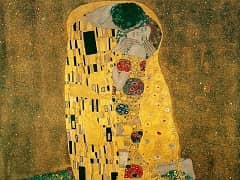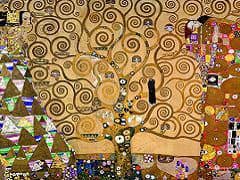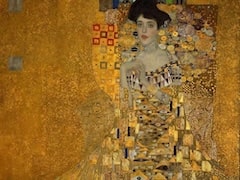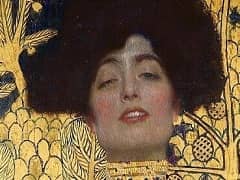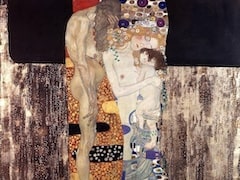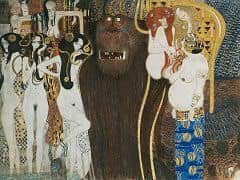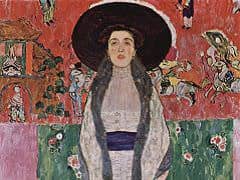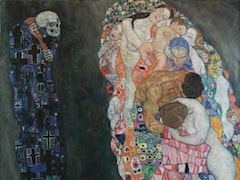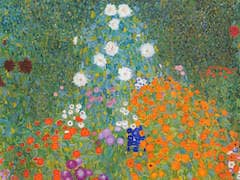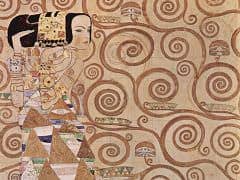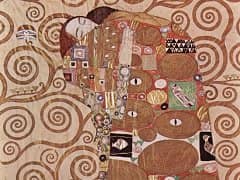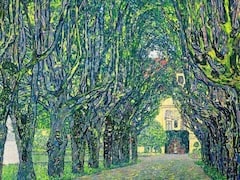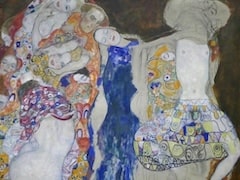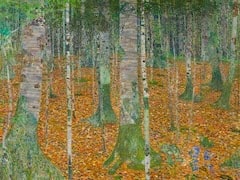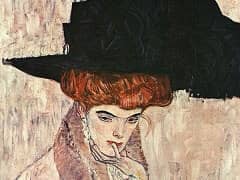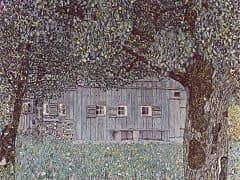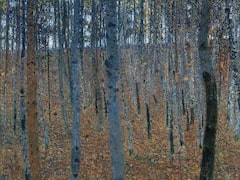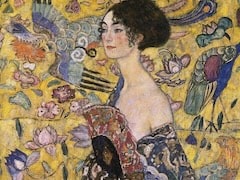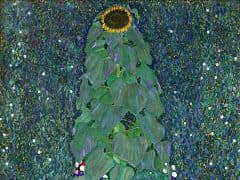Field of Poppies, 1907 by Gustav Klimt
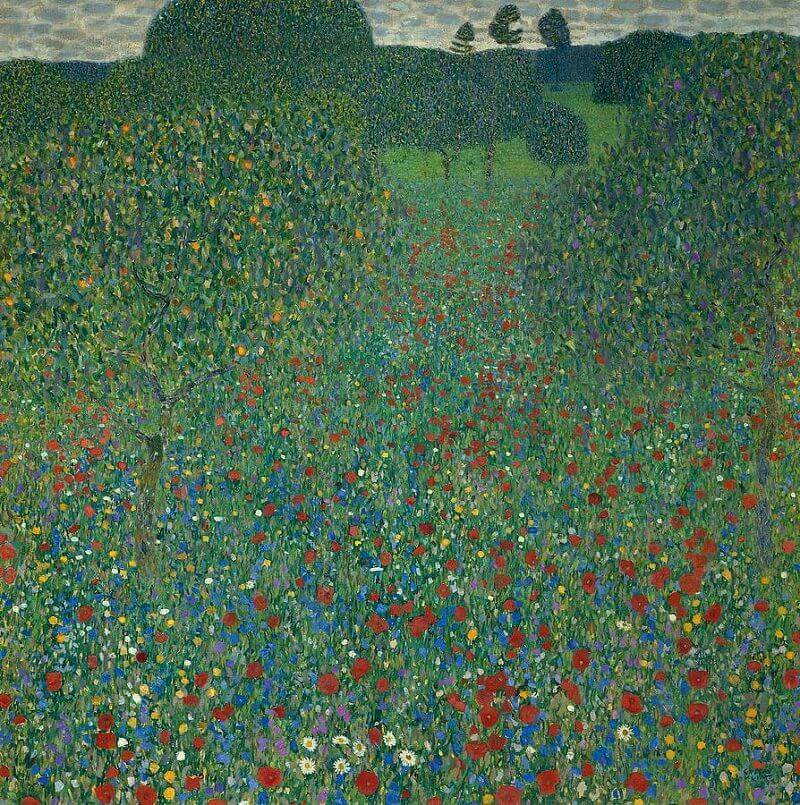
The polarizing effect of the red-green color opposition comes into effect in this poppy-filled landscape, one of Klimt's few to present a long perspective and deep horizon. In fact, instead of a dense background throwing colors or subjects to the picture surface, as in The Sunflower (1905), this work features a tightly packed foreground, with red intensity, to emphasize the panoramic horizon. Instead of finding ourselves confined within a close-up section of a landscape, we are treated to a lofty view, looking down on this luscious, fecund scene with its poppy explosion and fruit-laden trees. This, for Klimt, is his Garden of Eden, a world where he meets the divine through art. Again the work is reminiscent Impressionism of Van Gogh and that of Pointillist champion of Georges Seurat.
Another interesting aspect is the myriad of greens which have been carefully selected and precisely placed to create an overall tonal, yet decorative, armature. This exploration of a single color is a feature of many landscape works, and became an important issue in the development of The Stoclet Frieze (1905 - 11), as records show. For instance, Klimt spent months specifying exactly the right green enamels to be used for the Rose Bush sections, leaving exact instructions to metalcraft workers about their implementation

